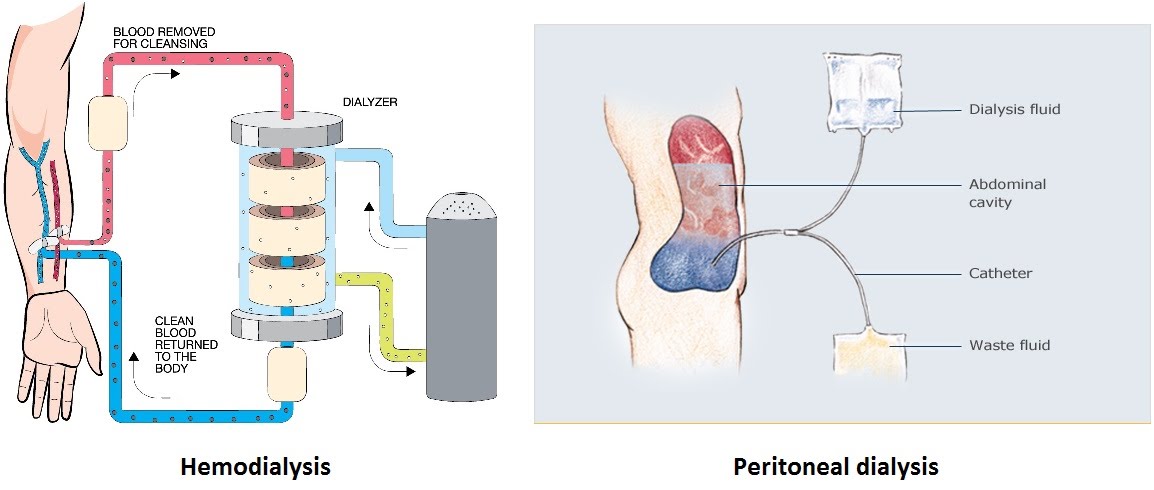Introduction
Symptoms
Dialysis
Hemodialysis
Peritoneal dialysis
Kidney transplantation
Hemodialysis
Hemodialysis requires a machine and is usually done out of home, a few times a week. The machine cleans the blood which is drawn out of the patient and then returned back through a tube connected between an artery and a vein. Hemodialysis requires a commitment to trips out at specific intervals to undergo dialysis, but is advantageous due to no participation required on the part of the patient during the procedure.
Peritoneal dialysis
Peritoneal dialysis involves using the abdominal cavity as the site of filtering. The abdominal cavity has a membrane called the peritoneal membrane which acts as a filter between the fluid in the abdomen (around the intestines) and blood circulation. A tube is placed through the membrane, and a special fluid is delivered into the cavity by the patient at home. This is then collected back after around 30 minutes in a waste bag, and repeated a few times daily. Alternatively, it can be done at night on a special machine called a cycler which switches the fluid to renew it several times automatically while the patient sleeps.
This method requires extreme caution keeping the tube insertion site in the abdomen clean as to avoid infection. Both methods require a strict diet, water intake and certain vitamins, and both methods….


